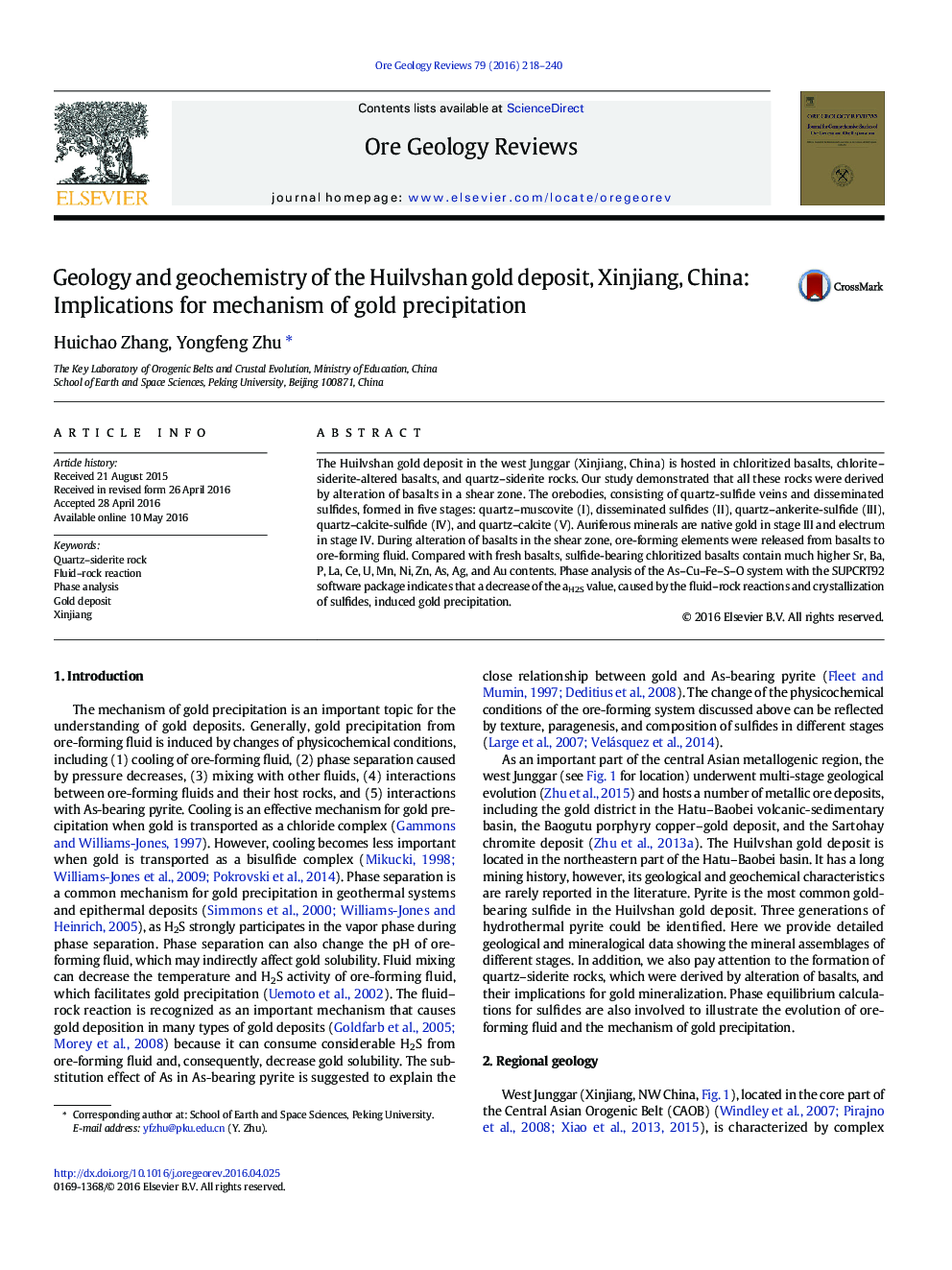| کد مقاله | کد نشریه | سال انتشار | مقاله انگلیسی | نسخه تمام متن |
|---|---|---|---|---|
| 4696794 | 1637227 | 2016 | 23 صفحه PDF | دانلود رایگان |

• Phase analysis in As-Cu-Fe-S-O system indicates that the decrease of aH2S triggered ore-formation.The decrease of aH2S value was caused by the fluid-rock reactions and crystallization of sulfides.
• Quartz-siderite rocks were derived by alteration of basalts via fluid-rock reactions in a shear zone.
The Huilvshan gold deposit in the west Junggar (Xinjiang, China) is hosted in chloritized basalts, chlorite–siderite-altered basalts, and quartz–siderite rocks. Our study demonstrated that all these rocks were derived by alteration of basalts in a shear zone. The orebodies, consisting of quartz-sulfide veins and disseminated sulfides, formed in five stages: quartz–muscovite (I), disseminated sulfides (II), quartz–ankerite-sulfide (III), quartz–calcite-sulfide (IV), and quartz–calcite (V). Auriferous minerals are native gold in stage III and electrum in stage IV. During alteration of basalts in the shear zone, ore-forming elements were released from basalts to ore-forming fluid. Compared with fresh basalts, sulfide-bearing chloritized basalts contain much higher Sr, Ba, P, La, Ce, U, Mn, Ni, Zn, As, Ag, and Au contents. Phase analysis of the As–Cu–Fe–S–O system with the SUPCRT92 software package indicates that a decrease of the aH2S value, caused by the fluid–rock reactions and crystallization of sulfides, induced gold precipitation.
Figure optionsDownload as PowerPoint slide
Journal: Ore Geology Reviews - Volume 79, December 2016, Pages 218–240